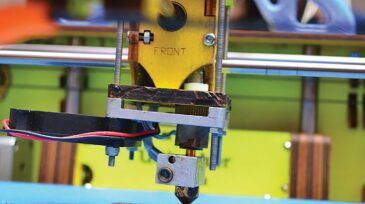R&D/innovation
The US supermajor is using one of its lowest-value hydrocarbon products to generate double-digit production increases in its most prolific US asset.
This article is the fourth in a Q&A series from the SPE Research and Development Technical Section focusing on emerging energy technologies. In this piece, David Reid, the CTO and CMO for NOV, discusses the evolution and current state of automated drilling systems.
Oil and gas experts encourage human/AI partnerships that can “supercharge” capabilities to create competitive advantages.
-
A recently launched joint industry project (JIP) is working to improve petrophysical analysis methods to reduce the time and expense of characterizing tight sandstone gas reservoirs for exploration, appraisal, and production.
-
Investment in digital technologies may increase project efficiency and reduce costs. However, Technip’s chief executive officer (CEO) said it is equally important to strengthen relationships with companies along the supply chain.
-
A number of ongoing industry research projects are developing nanoparticles that work at the reservoir level and for fluid treatment. Though they may be a few years away from finalization, these efforts highlight nanotechnology’s increasingly sophisticated and growing application scope.
-
This article is a summary of the 2016 follow-up paper on carbon capture and sequestration, one of the five grand challenges to the industry identified by the SPE R&D Committee in 2011.
-
ADNOC and BP will collaborate to form an earth surface technology center in Abu Dhabi. ADNOC has also reformed its stage gate process for advancement of new technologies.
-
New leadership aims to make positive, lasting changes at RPSEA.
-
Researchers at Heriot-Watt University in Edinburgh, Scotland, are building replica core samples using 3D printers and installing sensors inside them as they go. Their goal is to directly monitor pore-scale flow behavior from the inside of these so-called “smart rocks.”
-
Downturns offer you a choice: Panic and shut down all but breathing or make use of the opportunities that desperation has handed you. A mountain of mistakes is a gold mine to those willing to spend the time in assessment mode.
-
Service companies are using the latest generation of additive manufacturing technology to print out steel components for big ticket downhole tools. There is great potential for the technology to drive down equipment costs and improve performance.
-
For deepwater development, panelists at OTC emphasized the need for scalable technology, the standardization and simplification of projects, patient capital investment in innovation, greater collaboration, and new perspectives coming from outside the industry.













